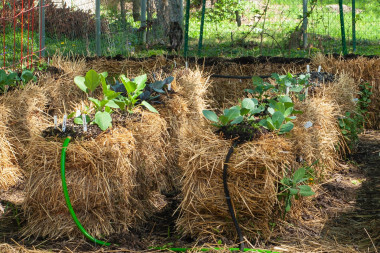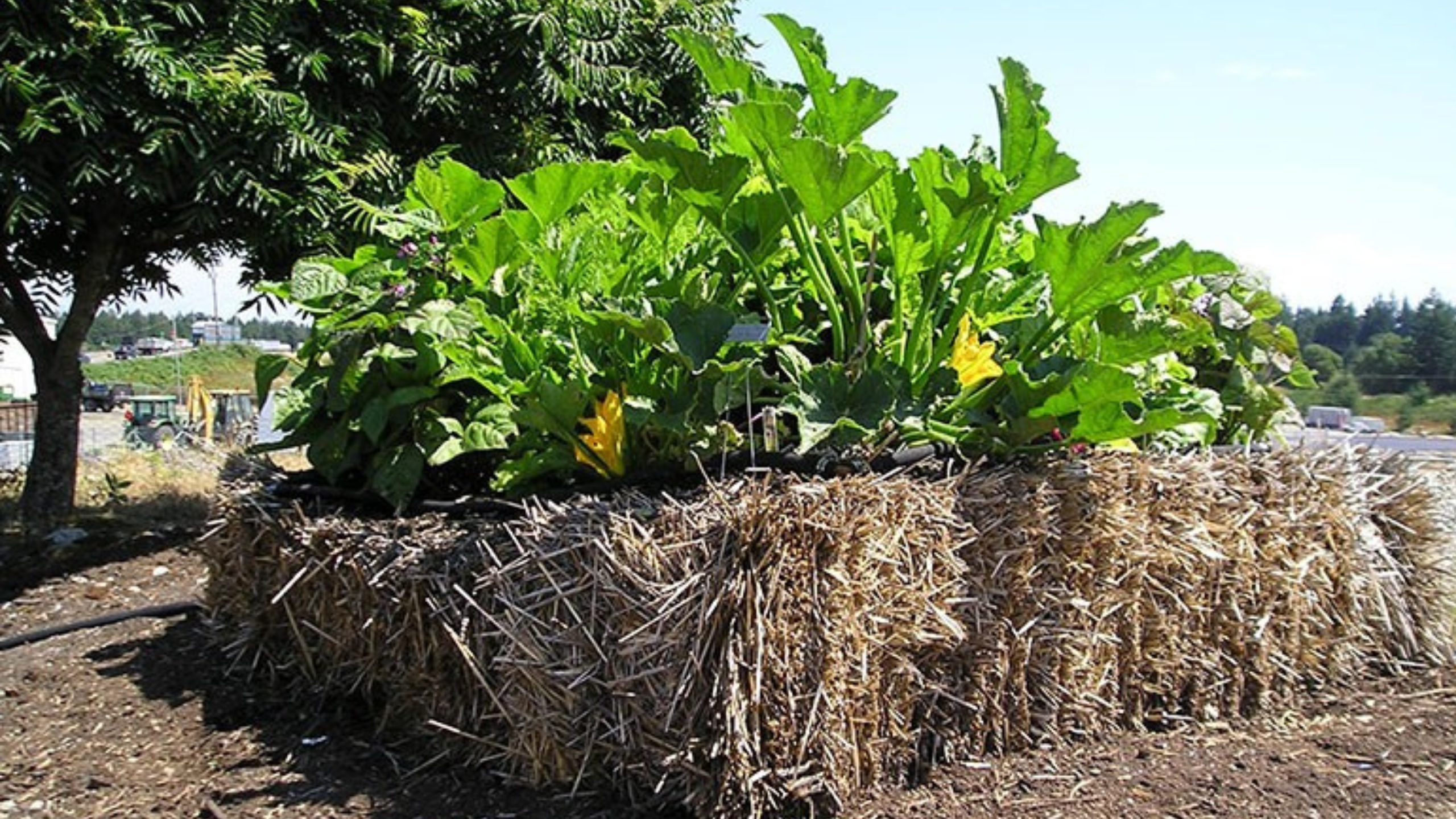No garden bed? Poor soil? No problem. With straw bale gardening, you can grow fresh, healthy vegetables practically anywhere—even on concrete. This space-saving, soil-free method is ideal for beginners, urban gardeners, or anyone looking to try a more sustainable, low-maintenance way to grow food.
Here’s everything you need to know to start growing vegetables in straw bales—from setting up to harvesting.
Why Choose Straw Bale Gardening?
Straw bale gardening is growing in popularity for good reason. It’s simple, adaptable, and eco-friendly. Some of the top benefits include:
No need for soil: Perfect for areas with hard clay, sand, or contaminated ground.
Raised height: Easier on the back and knees.
Excellent drainage: Ideal for rainy climates or poorly draining yards.
Built-in composting: As the bale breaks down, it enriches your plants naturally.
Best of all, with just a few bales, you can create a productive mini-garden in a driveway, patio, balcony, or yard.

Step 1: Choose the Right Location
Start by picking a sunny, level spot. Most vegetables—especially tomatoes, peppers, and greens—need at least 6 to 8 hours of sunlight per day.
Make sure the area is easy to reach with a hose or watering can. If you plan to grow tall plants, consider wind protection or placing them near a fence or wall.
Step 2: Prep Your Straw Bales
Before planting, straw bales must be “conditioned” to turn them into a nutrient-rich growing medium. Here’s how:
Soak the bales thoroughly with water for the first few days. This kick-starts internal decomposition.
Sprinkle a nitrogen-rich source on top daily—such as composted manure, blood meal, or a high-nitrogen fertilizer. This fuels the composting process inside the bale.
Over the next 10–14 days:
Continue watering daily to keep the bale moist.
Alternate between watering and applying nitrogen every other day.
By the end of two weeks, the inside of the bale should feel warm and slightly soft—signs that it’s ready to support plants.
Step 3: Plant Your Vegetables
Once your bales are conditioned, it’s time to plant.
You can either:
Transplant seedlings directly into the bales by pulling apart a small section and tucking the plant in, or
Sow seeds by adding a thin layer of compost or potting mix on top of the bale and planting as usual.
Great vegetables for straw bale gardening include:
Tomatoes
Peppers
Leafy greens
Cucumbers
Zucchini
Herbs like basil and parsley
Tip: For root vegetables like carrots or radishes, create small compost pockets or use a thick layer of soil on top of the bale.
Step 4: Add Support for Taller Plants
Some vegetables—like tomatoes, pole beans, or cucumbers—need help standing tall. Install stakes, cages, or trellises early to avoid disturbing the roots later.
You can insert supports directly into the bale or set up a freestanding frame behind the bales.
Step 5: Water Regularly
Straw bales dry out faster than traditional soil, so it’s essential to water consistently.
Check moisture daily, especially in hot weather.
Water slowly and deeply so the interior stays moist.
Soaker hoses or drip irrigation systems are perfect for this setup.
Avoid letting the bale dry out completely, especially in the early weeks.
Step 6: Feed Your Plants Weekly
Because water washes nutrients out of straw faster than soil, regular feeding is important.
Use a balanced liquid fertilizer every 7 to 10 days. Organic options like compost tea or seaweed extract work well and support bale decomposition too.
As the bale breaks down, it continues to provide natural nutrients, but a little extra boost helps ensure healthy harvests.
Step 7: Monitor and Maintain
Keep an eye out for signs of pests, wilting, or nutrient deficiencies. Because the bales sit above ground, they naturally deter many soil-borne pests, but it’s still good to stay alert.
Remove weeds as they appear (they’ll be few).
Add mulch around plants if needed for moisture retention.
Trim or support overgrown plants to keep everything tidy.
Step 8: Compost the Bale at the End of the Season
By the end of the growing season, your straw bales will begin breaking down fully. Don’t throw them out—instead, compost them or use the rich organic matter as mulch or soil conditioner in flower beds or next season’s garden.
The leftover bale material is perfect for enriching poor soil and improving drainage.
Final Thoughts
Straw bale gardening is more than a trendy technique—it’s a clever, low-cost way to grow your own food almost anywhere. Whether you’re short on space, dealing with poor soil, or simply want a fun, beginner-friendly gardening project, this method delivers big rewards.


https://t.me/s/bEeFcASiNO_OfFiCIaLS